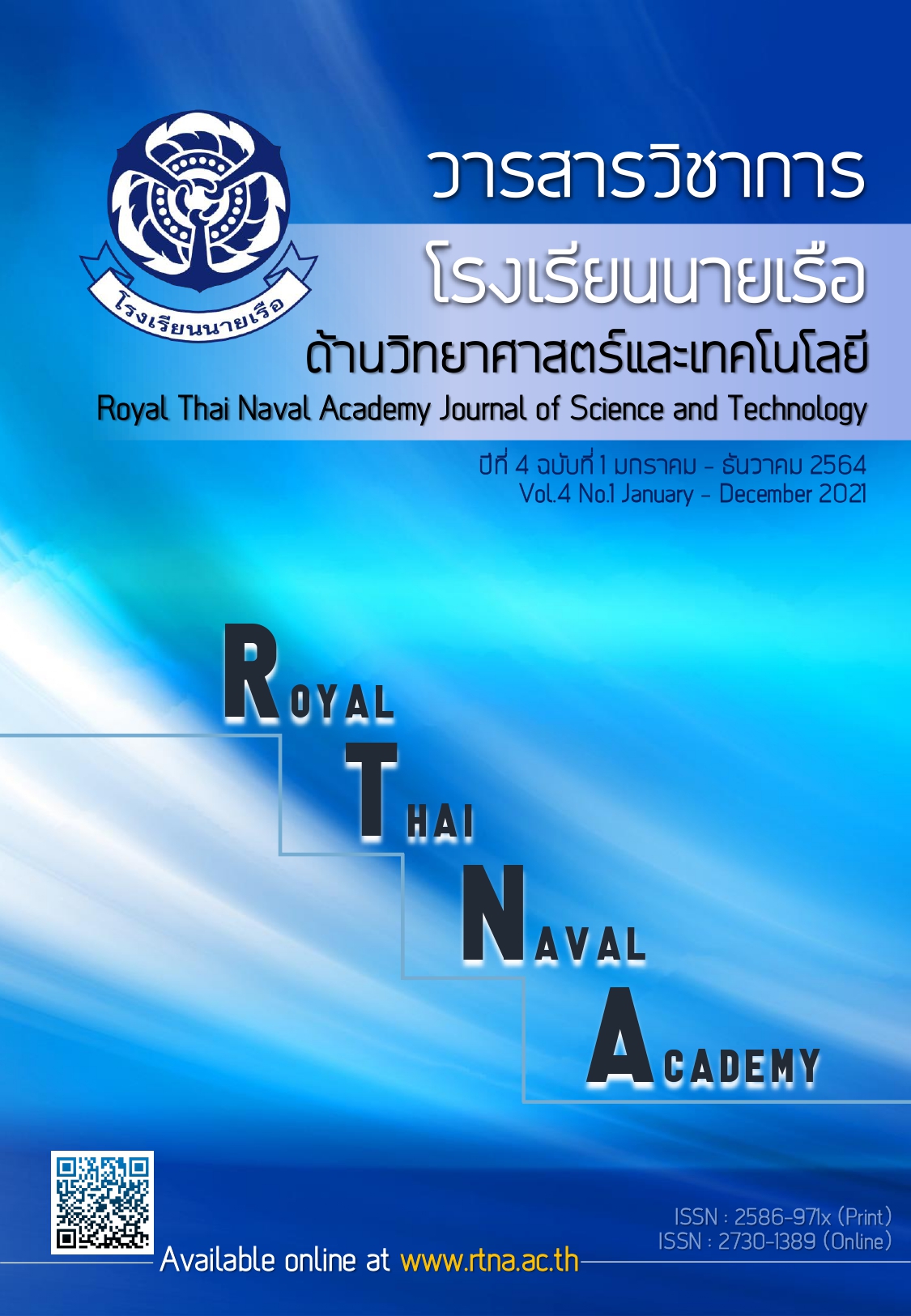Sonar Sound Generation that Affects Underwater Object Detection
Main Article Content
Abstract
The first active sonar was invented by Alexander Behm, a German physicist in 1913, since then this equipment influences the practical and importance of underwater acoustic usability especially in survey and military purpose. After that, many types of sonar were developed for different purposes such as sidescan sonar, sub-bottom profiler, multibeam echo sounder, bow mount sonar. To use these sonar systems with the fullest capability, there are 3 main factors that have to be concerned which are sound wave from source (transducer), sound medium and target characteristics. This article will focus on the use of sonar for underwater feature detection by emphasis on the first factor, the sound wave from source, which is the foundation of the sonar. The characteristics of the sound produced by sonar such as frequency, amplitude, shape and pulse can determine the sonar feature detection capabilities such as size, distance, number and shape. The understanding of underwater sound in this article can be applied for any type of the sonar system used in the present.
Article Details
The author has the sole responsibility for the material published in RTNA Journal of Science and Technology, which the editorial board may not agree on that material.
RTNA Journal of Science and Technology owns the copyright of the text, the illustration, or other material published in the journal. No parts or the whole of the material published may be disseminated or used in any form without first obtaining written permission from the academy.
References
Fahy F, Walker J. Fundamentals of noise and vibration. 1st ed. London: CRC Press; 1998.
International Hydrographic Department. Manual on Hydrography: Publication C-13. 1st ed. Monaco: International Hydrographic Bureau; 2005.
Hydrographic Office. General Instructions for Hydrographic Surveys. 17th ed. [Taunton]: Hydrographer of the Navy; 1996.
U.S. Army Corps of Engineers. Hydrographic Surveying: EM-1110-2-1003. Washington: Department of the Army; 2002.
Snell's_law [Internet]. [place unknown]: [publisher unknown]; 2020 [updated 2021 Mar 7; cited 2020 Dec 10]. Available from: https://en.wikipedia.org/wiki/Snell's_law
Fuchs J. Ultrasonics – Transducers – Piezoelectric Hardware [Internet]. Ohio: Cleaning Technologies Group; 2012 [cited 2020 Dec 10]. Available from: https://techblog.ctgclean.com/2012/01/ultrasonics-transducers-piezoelectric-hardware/.
Atlas Elektronik. ASO – 713/723 Hull-Mounted Active Sonar [Internet]. Bremen: Atlas Elektronik; 2020 [cited 2020 Dec 11]. Available from: https://www.atlas-elektronik.com/ fileadmin/user_upload/01_Images/Solutions/Datenblaetter_zum_Download/011_ASO.pdf
Sonar Technology and Hydroacustics with Piezo Transducers [Internet]. Lederhose: PIEZO TECHNOLOGY; 2020 [cited 2020 Dec 11]. Available from: https://www.piceramic.com/en/ applications/high-power-ultrasound/sonar-technology-hydroacoustics/.
Toal DJF, Nolan S. A low directivity ultrasonic sensor for collision avoidance and station keeping on inspection-class AUVs. Journal of marine engineering and technology [Internet]. 2008 [cited 2020 Dec 12];2008(11):35-45. Available from: https://www.researchgate.net/figure/Using-geometric-de-focusing-to-increase-transducer-beam-width-at-higher-frequencies_fig2_233508675
HZ SONIC. DBS300 Multi-beam depth-sounding transducer array [Internet]. Wuxi Jiangsu: HZ SONIC; 2015 [cited 2020 Dec 13]. Available from: http://www.hzsonic.com/products/acoustic-emissionreceiving-array/dbs300-multi-beam-depth-sounding-transducer-array/.
Comrade Misfit. Ping Time [Internet]. [place unknown]: [publisher unknown]; 2008 [cited 2020 Dec 13]. Available from: http://www.shipbucket.com/forums/viewtopic.php?t=20&start=420
Cornell University. A General Guide for Deriving Abundance Estimates from Hydroacoustic Data [Internet]. [place unknown]: Cornell University; 2020 [cited 2020 Dec 10]. Available from: http://www.acousticsunpacked.org/AcousticBackground /AcousticTransducers.html
Raymarine. Choosing a Transducer [Internet]. [place unknown]: Raymarine; 2020 [cited 2020 Dec 11]. Available from: https://www.raymarine.com/view/index-id=197.html

